Home - ALL Products - Auto Paint Series - Automotive Paint Thinner
Auto Paint Series
2K Autocryl Colors
1K Autobase Colors
1K Silver Colors
1K Pearl Colors
1K Crystal Pearl Colors
Clear Coat (varnish)
Hardeners
Thinners
Additives
Car Body Filler
Auto Repair Series
View All Products
CONTACT US
Automotive Paint Thinner
Standard Thinner:
Our Standard Thinner is a reliable choice for various painting applications. It is designed to maintain the ideal viscosity of the paint, ensuring smooth and consistent coverage. With its balanced formulation, the Standard Thinner offers excellent compatibility with a wide range of automotive paints.
Fast Thinner:
When time is of the essence, our Fast Thinner comes to the rescue. This specially formulated thinner is engineered to accelerate the drying process, allowing for quicker turnaround times. The Fast Thinner not only reduces waiting time but also provides optimal thinning properties, ensuring an even and professional finish.
Slow Thinner:
For projects that require a slower drying time, our Slow Thinner is the perfect choice. This premium product provides extended open time, allowing for better leveling and flow of the paint. The Slow Thinner is ideal for intricate designs, customizations, or situations where you need more time to achieve the desired results.
Key Features of SYBON Automotive Paint Thinner:
· Superior thinning properties for optimal paint performance.
· Ensures consistent viscosity and smooth application.
· Compatible with a wide range of automotive paints.
· Fast Thinner accelerates drying time for efficient workflows.
· Slow Thinner offers extended open time for better control and precision.
Trust SYBON for all your automotive paint thinner needs. Our products are meticulously developed and rigorously tested to deliver exceptional results. Choose SYBON and experience the difference in quality and performance.For more information or to place an order, please visit our website or contact our sales team.
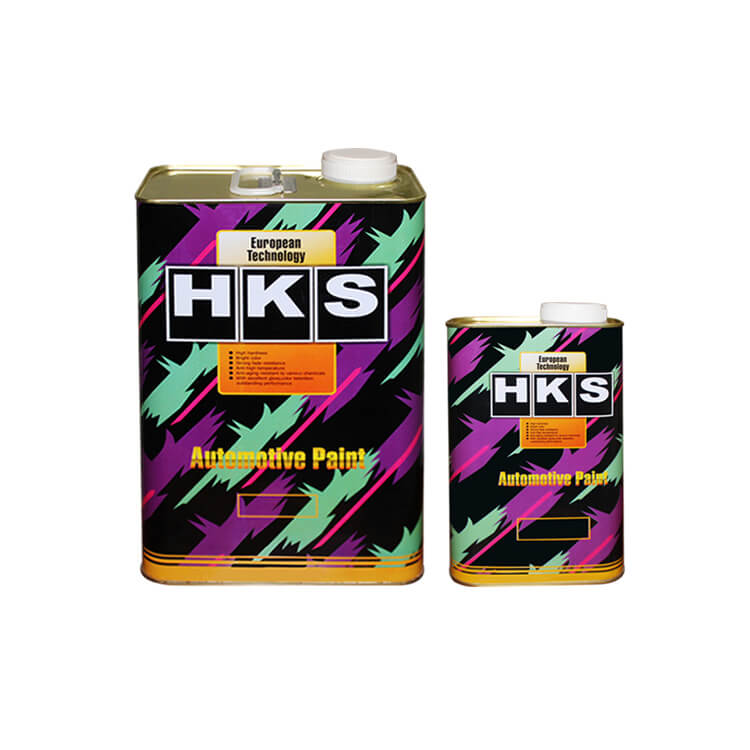
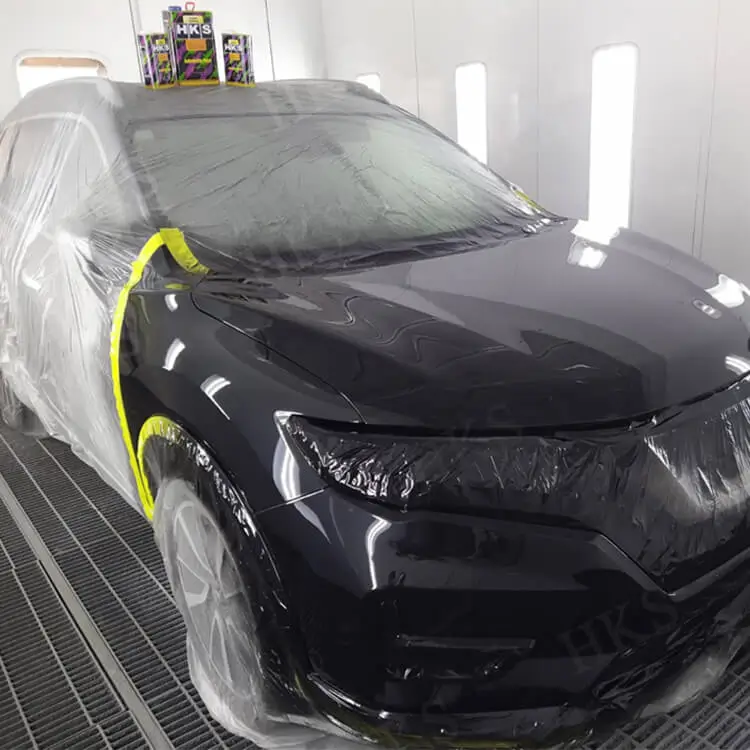
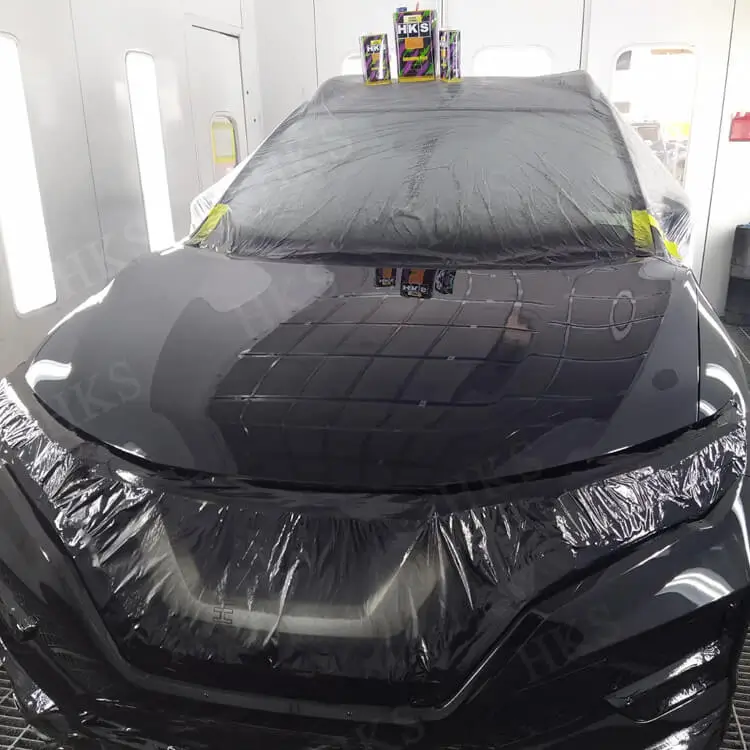
| Thinner series | |
|---|---|
| Feature | High quality thinner, specially developed for primer, basecoat and topcoat.Available with fast, standard, slow and extra slow drying speed to match different products and different application requirenents. |
| Thinner | 1.Fast dry thinner 2.Standard thinner 3.Slow dry thinner |
| Application | To reduce the application viscosity, increase the smoothness of paint film. Good solubility |
| Characteristics | Fast dry thinner Fastest evaporation speed, suitable for spot repair or application below 15℃ Standard thinner Medium evaporation speed, suitable for spot repair or application at 15-25℃ Slow dry thinner Slowest evaporation speed, suitable for spot repair or overall refinishing or application at 20-30℃ |
| Remark | At high temperature or high humidity, it is recommended to add 10-30% Retarder Solvent |
| Shelf Life | 2 years in its original sealed can at cool and dry place at 20 ℃ |
| Packaging | 1L, 4L |
Contact Details
No 4, Chengye Road, Daliang, Shunde, Foshan, Guangdong, China
+86 13682292799
www.supersybon.com
sales@supersybon.com
SOCIAL
Contact Us
Enquiry will send to our sales team, we will reply you with 24 hours.
Need Any Help ?
Order or no-order we are always here to help you
Welcome to SYBON - Your Trusted Automotive Paint Thinner Manufacturer
SYBON is a reputable and professional manufacturer of automotive paint, dedicated to delivering high-quality products to meet the needs of the automotive industry. As a leader in the field, we take pride in offering a wide range of top-notch Automotive Paint Thinner solutions. Our company specializes in a distribution model, catering to importers, wholesalers, and paint shop owners who are seeking reliable and efficient diluents for their businesses.

Why Choose SYBON Automotive Paint Thinner?
Uncompromising Quality:
At SYBON, quality is our utmost priority. Our Automotive Paint Thinners are manufactured using premium-grade ingredients and advanced production techniques. We adhere to strict quality control measures, ensuring that each batch of thinner meets the highest industry standards. By choosing SYBON, you can rest assured that you are providing your customers with a superior product.
Extensive Product Range:
We understand that every business has unique requirements. That's why we offer a diverse range of Automotive Paint Thinners to suit different application needs. Whether you need a standard thinner for general painting purposes, a fast thinner for accelerated drying times, or a slow thinner for intricate designs, SYBON has you covered. Our comprehensive product range ensures that you will find the perfect solution to enhance your painting processes.
Reliable Distribution Partnership:
SYBON believes in fostering strong and mutually beneficial partnerships with distributors, importers, and wholesalers. We offer competitive pricing and flexible terms to support your business growth. By partnering with SYBON, you gain access to our extensive product portfolio, technical support, and marketing resources. Together, we can achieve success in the automotive paint market.
Unparalleled Customer Support:
We value our customers and strive to provide exceptional service at every step. Our dedicated customer support team is always ready to assist you with any inquiries or concerns you may have. We are committed to building long-lasting relationships based on trust, transparency, and open communication.
Join the SYBON Family Today!
If you are an importer, wholesaler, or paint shop owner looking for a reliable and reputable supplier of Automotive Paint Thinners, SYBON is the perfect choice. With our commitment to quality, diverse product range, reliable distribution model, and exceptional customer support, we aim to be your trusted partner in the automotive paint industry.
To learn more about SYBON and our Automotive Paint Thinner offerings, please visit our website or contact our sales team. We look forward to serving you and contributing to your business success.
CONTACT US
Enquiry will send to our sales team, we will reply you with 24 hours.
The Ultimate Guide to
Automotive Paint Thinners: Everything You Need to Know
What is a Automotive Paint Thinner and How Does It Work?
How Automotive Paint Thinners Enhance the Painting Process: Key Benefits Explored
Choosing the Right Automotive Paint Thinner: Factors to Consider
Step-by-Step Guide: Proper Application of Automotive Paint Thinner for a Flawless Finish
Exploring the Different Types of Automotive Paint Thinners and Their Uses
Common Mistakes to Avoid When Using Automotive Paint Thinner
The Role of Automotive Paint Thinner in Achieving Professional-Quality Results
How Automotive Paint Thinners Contribute to Sustainable Painting Practices
What is a Automotive Paint Thinner and How Does It Work?
Automotive paint thinner, also known as automotive solvent, is a crucial component in the automotive painting process. It is specifically designed to alter the consistency of automotive paint, making it easier to apply and ensuring optimal performance. In this article, we will delve into the details of automotive paint thinner, its composition, and how it works.
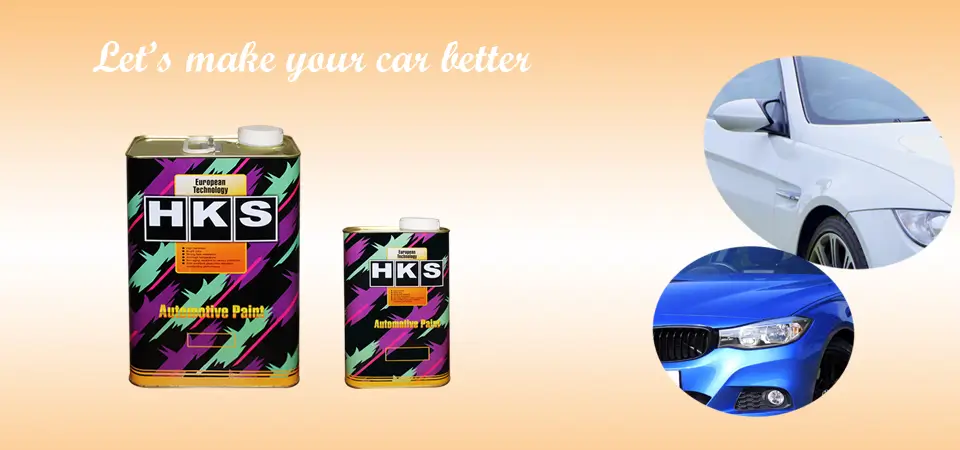
Composition of Automotive Paint Thinner:
Automotive paint thinner is typically a blend of various solvents and chemicals carefully formulated to achieve specific properties. The composition may vary depending on the manufacturer and intended application. Common solvents found in automotive paint thinner include:
a. Mineral Spirits: This petroleum-derived solvent is a key ingredient in automotive paint thinner. It effectively dissolves paint components, making it easier to thin and apply evenly.
b. Toluene: Toluene is a strong solvent that helps in breaking down paint particles and improving flow and leveling characteristics.
c. Xylene: Xylene is another aromatic solvent that aids in the dissolving and thinning of paint. It also helps in reducing viscosity and improving the drying time.
d. Acetone: Although less commonly used, acetone can be found in some automotive paint thinners. It is a powerful solvent that quickly evaporates, promoting faster drying times.
Functions of Automotive Paint Thinner:
Automotive paint thinner serves several important functions in the painting process:
a. Thinning: The primary purpose of automotive paint thinner is to reduce the viscosity of the paint, making it easier to spray or brush onto the vehicle's surface. Thinning the paint improves its flow and prevents it from clogging the spray gun or leaving streaks during application.
b. Cleaning: Automotive paint thinner is also used to clean paint equipment such as brushes, rollers, and spray guns. It effectively removes residual paint and prevents clogs, ensuring optimal performance and prolonging the lifespan of the equipment.
c. Evaporation Control: Paint thinner helps control the evaporation rate of the paint, ensuring that it remains workable for a desired amount of time. This is particularly important when painting large areas or in hot weather conditions, where rapid evaporation can lead to uneven application.
How Automotive Paint Thinner Works:
When automotive paint thinner is added to paint, it interacts with the components of the paint, altering its properties. The key mechanisms by which automotive paint thinner works include:
a. Solvent Action: The solvents in paint thinner effectively dissolve the binders, pigments, and additives present in the paint, reducing their size and viscosity. This process enables smoother application and improved leveling.
b. Dilution: By diluting the paint, automotive paint thinner lowers its viscosity, allowing it to flow more easily. This makes it simpler to achieve even coverage and reduces the risk of streaks or brush marks.
c. Evaporation Control: Paint thinner helps control the rate at which the paint dries by slowing down the evaporation process. This allows the paint to remain wet and workable for an extended period, facilitating proper application and reducing the occurrence of dry spray.
Precautions and Safety:
When working with automotive paint thinner, it is essential to follow safety guidelines to minimize potential risks. Some important precautions include:
a. Adequate Ventilation: Always work in a well-ventilated area or use appropriate ventilation equipment to avoid inhaling harmful fumes.
b. Protective Gear: Wear protective gloves, goggles, and a respirator to protect your skin, eyes, and respiratory system from exposure to solvents.
c. Flammability: Automotive paint thinners are highly flammable. Keep them away from open flames, sparks, and heat sources.
d. Proper Disposal: Dispose of used paint thinner and related materials in accordance with local regulations to prevent environmental contamination.
Conclusion:
Automotive paint thinner is a crucial component in the automotive painting process. Its ability to reduce viscosity, improve flow, and control evaporation makes it an indispensable tool for achieving professional results. By understanding its composition and how it works, painters can utilize automotive paint thinner effectively while adhering to safety precautions, ensuring successful and efficient automotive paint applications.
How Automotive Paint Thinners Enhance the Painting Process: Key Benefits Explored
SYBON, a renowned automotive paint manufacturer, understands the importance of automotive paint thinners in the painting process. Automotive paint thinners play a vital role in achieving optimal paint application and overall finish. In this detailed article, we will explore the key benefits of automotive paint thinners and how they enhance the painting process.
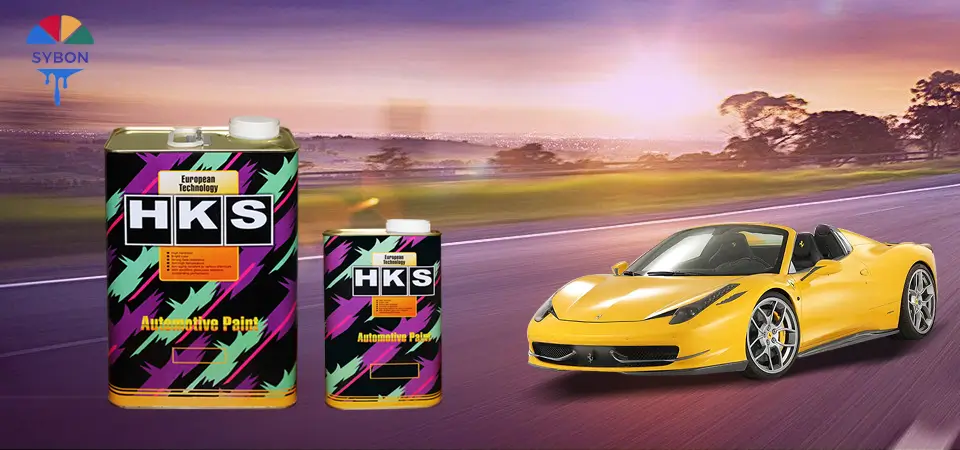
Improved Flow and Leveling:
Automotive paint thinners significantly enhance the flow and leveling characteristics of paint. When added to paint, the thinners reduce its viscosity, allowing it to spread smoothly and evenly over the surface. This improved flow prevents streaks, brush marks, and uneven coverage, resulting in a professional-looking finish.
Easier Application:
Thinned automotive paint is easier to apply, whether using a spray gun, brush, or roller. The reduced viscosity allows for better control and maneuverability, enabling painters to achieve the desired consistency and coverage. This ease of application ensures efficient work processes and reduces the likelihood of application errors.
Prevention of Clogs:
Automotive paint thinners play a crucial role in preventing clogs in painting equipment, such as spray guns. The solvents present in the thinners dissolve and remove dried paint particles that can accumulate in the nozzle or tip, ensuring uninterrupted paint flow. By preventing clogs, paint thinners contribute to consistent paint application and reduce downtime for cleaning and maintenance.
Faster Drying Time:
Paint thinners, when appropriately selected and used, can help accelerate the drying time of automotive paint. They promote faster solvent evaporation, allowing the paint to dry more quickly. This is particularly beneficial when working on time-sensitive projects or in environments with high humidity. Reduced drying time enables faster completion of painting jobs and minimizes the risk of dust or debris settling on the wet paint surface.
Customizable Paint Consistency:
Automotive paint thinners offer the advantage of customizing the consistency of the paint to suit specific application techniques and desired effects. By adjusting the amount of thinner added, painters can achieve variations in the paint's thickness and texture. This versatility allows for creative freedom and the ability to match different painting styles and requirements.
Enhanced Blending and Layering:
For complex paint jobs that involve blending or layering colors, automotive paint thinners are invaluable. They facilitate the seamless integration of different colors, ensuring smooth transitions and preventing harsh lines or demarcations between layers. Paint thinners enable painters to achieve subtle gradients, shading, and intricate details, enhancing the overall visual impact of the finished paintwork.
Efficient Cleaning of Equipment:
Automotive paint thinners are not only useful for thinning paint but also for cleaning painting equipment. They effectively dissolve residual paint, making equipment maintenance easier and more efficient. Regularly cleaning brushes, rollers, and spray guns with paint thinners helps preserve their functionality, prolongs their lifespan, and ensures consistent paint application in future projects.
Conclusion:
As a professional automotive paint manufacturer, SYBON recognizes the significance of automotive paint thinners in enhancing the painting process. From improving flow and leveling to preventing clogs and enabling customizable paint consistency, the benefits of paint thinners are numerous. These thinners contribute to efficient paint application, faster drying times, and superior paint finishes.
Choosing the Right Automotive Paint Thinner: Factors to Consider
As a leading automotive paint manufacturer, SYBON understands the importance of choosing the right automotive paint thinner for optimal paint performance and application. Selecting the appropriate paint thinner is crucial to achieving desired results. In this comprehensive article, we will explore the factors that should be considered when choosing an automotive paint thinner.
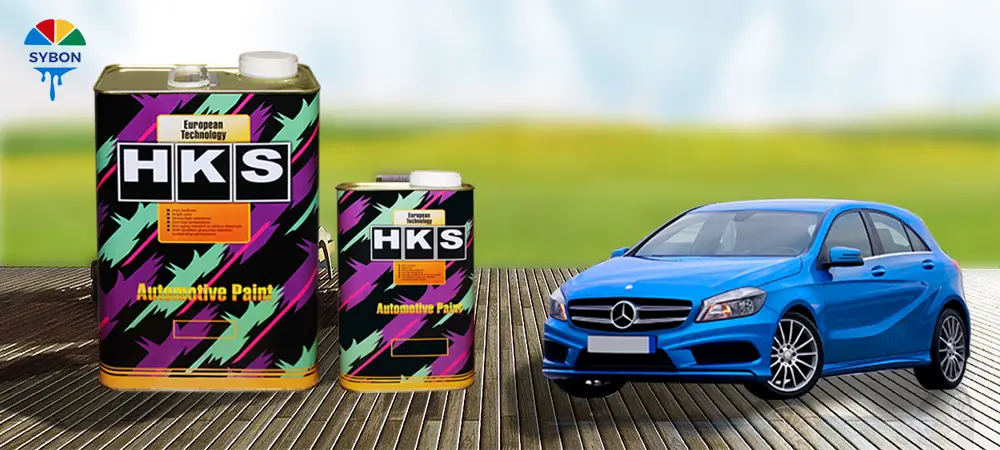
Paint Compatibility:
The compatibility between the paint and the paint thinner is a primary consideration. Different types of paints require specific thinners to ensure proper mixing and consistency. It is essential to consult the paint manufacturer's guidelines or technical data sheets to determine the recommended paint thinner for the specific paint system being used. Using an incompatible thinner may lead to issues such as paint separation, poor adhesion, or compromised finish quality.
Application Method:
Consider the application method when choosing an automotive paint thinner. Different thinners are formulated for specific application techniques, such as spraying, brushing, or rolling. The viscosity and drying time requirements vary depending on the application method. For instance, spray gun applications may require a thinner with faster evaporation rates to avoid sagging, while brush applications may benefit from slower evaporation rates to allow for better leveling.
Desired Consistency:
Consider the desired consistency of the paint when selecting a paint thinner. Different projects may require varying levels of paint thickness or thinness. Thinner viscosity provides better flow and is suitable for large surface areas, while slightly thicker viscosity may be preferable for detailed work or textured surfaces. It is essential to understand the paint manufacturer's recommendations and experiment with different ratios of paint to thinner to achieve the desired consistency.
Safety and Health Considerations:
Safety and health considerations are paramount when working with automotive paint thinners. Some thinners may contain volatile organic compounds (VOCs) or hazardous substances. It is important to review safety data sheets (SDS) provided by the manufacturer to understand the potential health risks associated with the paint thinner. Consider using low-VOC or environmentally friendly options when possible and ensure proper ventilation and personal protective equipment (PPE) during handling and application.
Manufacturer's Recommendations:
Always refer to the manufacturer's recommendations for selecting an automotive paint thinner. Manufacturers often provide guidelines and technical data sheets that outline compatible thinners for their specific paint systems. Following the manufacturer's recommendations ensures optimal performance, longevity, and warranty compliance.
Testing and Experience:
Lastly, testing and personal experience can help in determining the most suitable automotive paint thinner for specific projects. Conducting small-scale trials with different thinners can provide insights into their compatibility, ease of use, and overall performance. Drawing from personal experience and feedback from other professionals can also aid in making an informed decision.
Conclusion:
Choosing the right automotive paint thinner is crucial for achieving superior paint performance and application results. Consider factors such as paint compatibility, application method, desired consistency, safety considerations, manufacturer's recommendations, and personal experience. By carefully evaluating these factors, professionals can select the most appropriate automotive paint thinner, ensuring optimal paint performance, efficiency, and overall satisfaction with the finished results.
Step-by-Step Guide: Proper Application of Automotive Paint Thinner for a Flawless Finish
SYBON, a trusted automotive paint manufacturer, recognizes the importance of proper application techniques when using automotive paint thinners. The correct application of paint thinners ensures an even, flawless finish and optimal paint performance. In this detailed article, we present a step-by-step guide to help you apply automotive paint thinner effectively for outstanding results.
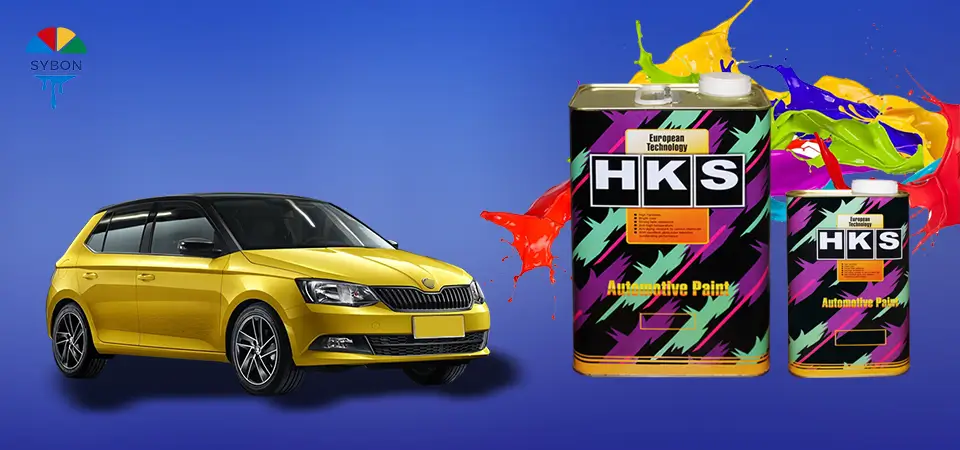
Step 1: Prepare the Work Area:
Begin by preparing a well-ventilated work area, preferably a spray booth or a properly ventilated outdoor space. Adequate ventilation is crucial to ensure a safe working environment and to prevent the inhalation of fumes.
Step 2: Gather the Necessary Equipment:
Gather all the necessary equipment, including the automotive paint thinner, the chosen paint system, appropriate safety gear (such as gloves, goggles, and a respirator), stirring sticks, and clean containers for mixing.
Step 3: Consult the Manufacturer's Guidelines:
Refer to the manufacturer's guidelines and technical data sheets for the paint system being used. Pay attention to the recommended paint-to-thinner ratios, specific thinners suggested by the manufacturer, and any other instructions related to the application of the paint and thinners.
Step 4: Mix the Automotive Paint Thinner:
Carefully measure the required amount of automotive paint thinner according to the manufacturer's guidelines. Use a clean container and stir the thinner gently to ensure proper mixing. Avoid vigorous stirring, as it may introduce air bubbles into the mixture.
Step 5: Test the Paint Mixture:
Before applying the paint mixture to the target surface, perform a small-scale test to evaluate its consistency, flow, and compatibility. Adjust the paint-to-thinner ratio if necessary to achieve the desired viscosity and flow characteristics.
Step 6: Clean the Surface:
Prepare the surface to be painted by ensuring it is clean, dry, and free from dust, grease, and contaminants. Use appropriate cleaning agents and techniques recommended by the paint manufacturer to achieve a pristine surface.
Step 7: Apply the Thinned Paint:
Choose the appropriate application method based on the paint system and project requirements. Whether using a spray gun, brush, or roller, follow these guidelines:
a. Spraying: For spray gun application, adjust the gun settings according to the manufacturer's recommendations. Start with a light mist coat to establish a smooth base, followed by subsequent coats, allowing proper flash-off times between each layer.
b. Brushing/Rolling: When using a brush or roller, ensure that the paint is evenly loaded onto the applicator. Apply the thinned paint in smooth, overlapping strokes, maintaining a wet edge to avoid visible brush or roller marks.
Step 8: Observe Flash-Off and Drying Times:
Allow the thinned paint to flash off and dry according to the paint manufacturer's instructions. Factors such as temperature, humidity, and paint system may influence drying times. Avoid disturbing the painted surface during the drying process to prevent imperfections.
Step 9: Clean Up:
After completing the painting process, clean all equipment thoroughly using the appropriate solvent or cleaning agents recommended by the paint manufacturer. Proper equipment maintenance ensures their longevity and reliable performance for future projects.
Step 10: Evaluate the Finished Result:
Once the painted surface is fully dried, evaluate the finished result for any imperfections or areas that may require touch-ups. If necessary, repeat the application process using the appropriate automotive paint thinner to achieve the desired outcome.
Conclusion:
Proper application of automotive paint thinner is essential for achieving a flawless finish and optimal paint performance. By following this step-by-step guide, you can apply automotive paint thinner effectively, ensuring the desired consistency, flow, and leveling of the paint. With SYBON's commitment to quality and your attention to detail during the application process, you can achieve outstanding results and create a stunning finish for your automotive paint projects.
Exploring the Different Types of Automotive Paint Thinners and Their Uses
SYBON, a renowned automotive paint manufacturer, recognizes the importance of understanding the different types of automotive paint thinners and their specific uses. Choosing the right paint thinner is crucial for achieving optimal paint performance and desired results. In this comprehensive article, we will explore the various types of automotive paint thinners available and their specific applications.
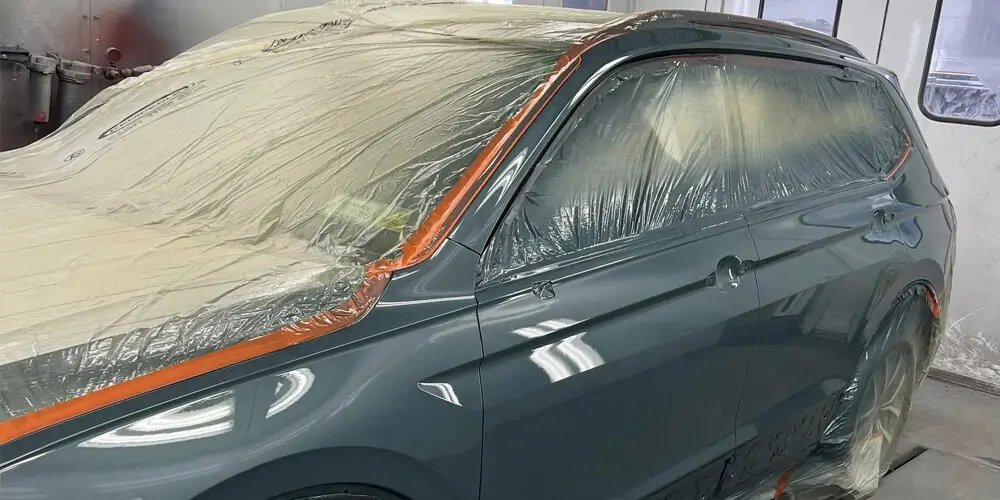
Mineral Spirits:
Mineral spirits, also known as paint thinner or white spirit, are commonly used as a general-purpose solvent in automotive painting. They are effective in thinning oil-based paints, enamels, varnishes, and certain lacquers. Mineral spirits are relatively mild and have a slower evaporation rate, making them suitable for projects that require longer open times and better flow control.
Toluene:
Toluene is a strong solvent that is effective in thinning and removing various types of automotive paints, including enamels, lacquers, and some urethane-based paints. It has a faster evaporation rate compared to mineral spirits, making it ideal for quick-drying applications. However, toluene is highly flammable and requires proper safety precautions during handling and storage.
Xylene:
Xylene is another powerful solvent commonly used in automotive paint thinners. It is effective in thinning and removing a wide range of automotive paints, including enamels, lacquers, and some two-component urethane paints. Xylene evaporates relatively quickly and helps achieve fast drying times. Like toluene, xylene is highly flammable and requires careful handling.
Acetone:
Acetone is a strong, fast-evaporating solvent that is effective in thinning and removing lacquers, shellac, and some synthetic enamels. It is commonly used for cleaning equipment and surfaces, as well as for removing paint overspray. However, acetone is highly volatile and can be aggressive on certain surfaces, so it should be used with caution and limited to appropriate applications.
Butyl Cellosolve:
Butyl Cellosolve, also known as ethylene glycol monobutyl ether, is a solvent with excellent solvency power. It is commonly used in automotive paint thinners for thinning and cleaning purposes. Butyl Cellosolve has a moderate evaporation rate, providing good flow and leveling properties. It is effective in thinning enamels, lacquers, and certain two-component urethane paints.
Isopropyl Alcohol:
Isopropyl alcohol, also known as IPA or rubbing alcohol, is a commonly used solvent in automotive paint thinners for cleaning surfaces and equipment. It is effective in removing contaminants, grease, and fingerprints before painting. However, isopropyl alcohol is not suitable for thinning paint itself, as it can adversely affect the paint's consistency and drying characteristics.
Water-based Paint Thinners:
Water-based paint thinners are specifically formulated for use with water-based automotive paints. These thinners are designed to maintain the proper consistency and performance of water-based paints without compromising their properties. They offer lower VOC emissions compared to solvent-based thinners, making them an environmentally friendly option. Water-based paint thinners are suitable for thinning water-based basecoats, clearcoats, and other waterborne automotive coatings.
Conclusion:
Understanding the different types of automotive paint thinners and their specific uses is crucial for achieving optimal paint performance and desired results. Mineral spirits, toluene, xylene, acetone, butyl cellosolve, isopropyl alcohol, and water-based thinners each have their own properties and applications. By choosing the appropriate paint thinner for your specific paint system and project requirements, you can ensure proper thinning, improved flow, and achieve a flawless finish. With SYBON's expertise in automotive paints and your knowledge of paint thinners, you can confidently enhance your painting process and create outstanding automotive paintwork.
Common Mistakes to Avoid When Using Automotive Paint Thinner
SYBON, a professional automotive paint manufacturer, understands the importance of proper usage of automotive paint thinners for achieving optimal results. However, certain mistakes can compromise the paint performance and finish quality. In this detailed article, we will explore common mistakes to avoid when using automotive paint thinner to ensure a successful painting process.
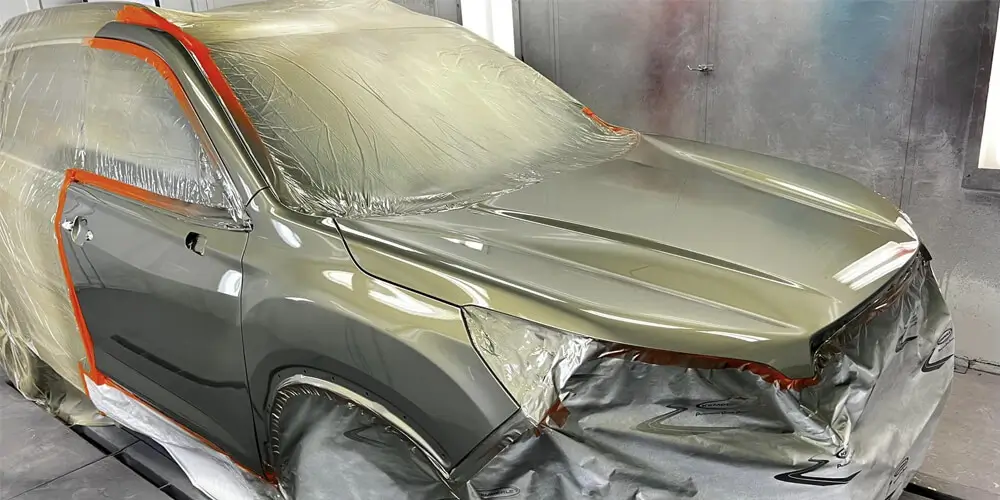
Incorrect Thinner Selection:
Choosing the wrong automotive paint thinner is a common mistake that can lead to various issues. Each paint system has specific compatibility requirements, and using an incompatible thinner can result in poor adhesion, paint separation, or compromised finish quality. Always refer to the paint manufacturer's guidelines and technical data sheets to select the recommended thinner for the specific paint system being used.
Incorrect Thinning Ratio:
Using an incorrect paint-to-thinner ratio can affect the consistency and application properties of the paint. Adding too much thinner can result in a runny, weak paint film, while insufficient thinning can lead to poor flow, brush marks, or orange peel texture. Follow the manufacturer's recommendations for the appropriate paint-to-thinner ratio to achieve the desired viscosity and consistency.
Insufficient Mixing:
Improper mixing of the paint and thinner can result in uneven consistency and poor color matching. Thoroughly stir the paint and thinner mixture using clean stirring sticks or tools to ensure complete homogeneity. Inadequate mixing can cause variations in color, pigment settling, or improper performance of additives.
Over-Thinning or Under-Thinning:
Over-thinning or under-thinning the paint can lead to undesirable outcomes. Over-thinning can result in reduced coverage, poor hiding power, and a weak paint film, while under-thinning can lead to difficulty in application and poor leveling. Achieving the correct paint consistency requires careful attention to the recommended paint-to-thinner ratio and gradual thinning adjustments as necessary.
Ignoring Environmental Conditions:
Neglecting the impact of environmental conditions during paint thinning and application is a common mistake. Temperature and humidity levels can affect the drying time, flow, and leveling properties of the paint. It is essential to follow the manufacturer's recommendations regarding ideal application conditions and adjust the thinner choice and thinning ratio accordingly.
Inadequate Surface Preparation:
Proper surface preparation is crucial for achieving a flawless finish. Neglecting to clean and prepare the surface adequately can result in adhesion issues, paint defects, or uneven finish. Thoroughly clean the surface, remove any contaminants, and ensure it is dry before applying the thinned paint.
Rushing the Application:
Hastily applying thinned paint without considering proper technique and application methods can lead to uneven coverage, drips, or visible brush or roller marks. Take your time and apply the thinned paint evenly, following recommended application techniques for the specific paint system. Allow sufficient drying time between coats for proper adhesion and to avoid disturbing the previous layers.
Lack of Personal Protective Equipment (PPE):
Failing to use appropriate personal protective equipment (PPE) when handling and applying automotive paint thinner can pose health risks. Paint thinners may contain volatile organic compounds (VOCs) or hazardous substances. Always wear gloves, goggles, and a respirator or mask specifically designed for paint-related tasks to protect yourself from potential health hazards.
Improper Disposal:
Improper disposal of leftover paint thinner and cleaning materials is an environmental concern. Follow local regulations and guidelines for the safe disposal of paint thinners and other hazardous waste. Avoid pouring paint thinner down drains or disposing of it in regular trash bins.
Conclusion:
Avoiding common mistakes when using automotive paint thinners is essential for achieving optimal paint performance, a flawless finish, and a safe working environment. By selecting the correct paint thinner, following recommended thinning ratios, thorough mixing, proper surface preparation, and adhering to application techniques, you can ensure successful results. With SYBON's expertise in automotive paint manufacturing and your attention to detail, you can elevate your painting process and achieve outstanding automotive paintwork.
The Role of Automotive Paint Thinner in Achieving Professional-Quality Results
SYBON, a professional automotive paint manufacturer, recognizes the critical role of automotive paint thinner in achieving professional-quality results. Automotive paint thinners play a vital role in enhancing the application process, ensuring optimal paint performance, and delivering a flawless finish. In this comprehensive article, we will explore the significance of automotive paint thinner and its impact on achieving exceptional results in automotive painting.
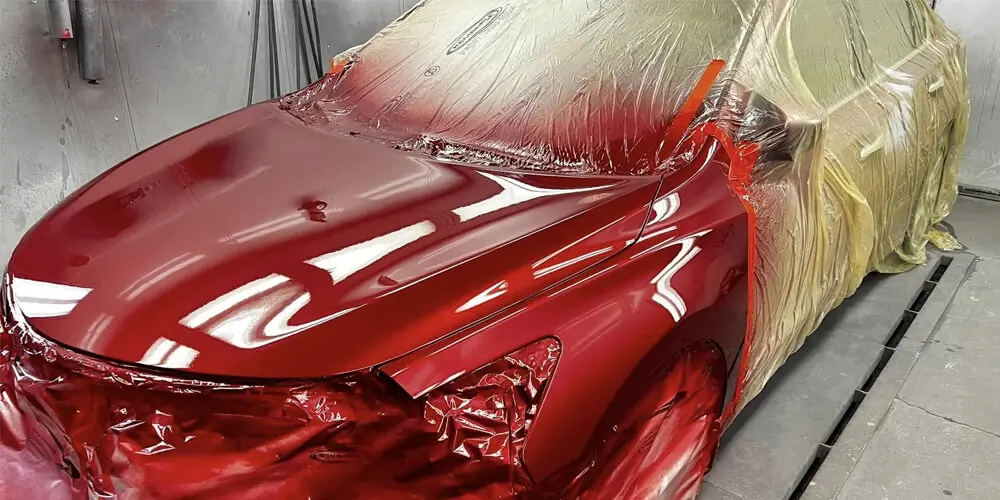
Consistency Control:
Automotive paint thinners are essential for controlling the consistency of the paint. They help adjust the viscosity of the paint, making it easier to apply and ensuring proper flow and leveling. The right consistency allows for even coverage, and promotes a uniform finish.
Thinning Capabilities:
One of the primary purposes of automotive paint thinners is to thin the paint, enabling smoother application and enhancing its workability. By thinning the paint, the thinners help reduce its thickness, making it easier to spray. This facilitates better control during the painting process, ensuring uniform coverage and minimizing the risk of runs or sags.
Improved Atomization:
When using spray guns, automotive paint thinners play a crucial role in achieving proper atomization. Thinning the paint helps break it down into finer particles, ensuring a more even spray pattern and better adhesion to the surface. This promotes a professional-quality finish, free from uneven texture or overspray.
Enhanced Flow and Leveling:
Automotive paint thinners contribute to improved flow and leveling of the paint. They assist in reducing the surface tension of the paint, allowing it to spread evenly over the surface. This helps minimize orange peel texture, and other surface imperfections, resulting in a smoother, more professional finish.
Quick Drying:
Different types of automotive paint thinners have varying evaporation rates, allowing for quicker or slower drying times. The choice of the appropriate thinner can influence the drying speed of the paint, providing the necessary time for proper leveling while ensuring efficient workflow. Quick-drying thinners are particularly beneficial for projects with time constraints.
Solvent Cleaning and Dilution:
Automotive paint thinners are versatile solvents that serve multiple purposes beyond thinning paint. They are used for cleaning paint equipment, such as brushes, rollers, and spray guns, to remove paint residues effectively. Additionally, paint thinners can be used to dilute paint for custom color matching or adjusting paint properties, providing flexibility and versatility in the painting process.
Compatibility and Performance Optimization:
Automotive paint thinners are formulated to be compatible with specific paint systems, ensuring optimal performance and longevity of the paint. Using the recommended paint thinner from the same manufacturer helps maintain the integrity of the paint system, enhances adhesion, color accuracy, and overall durability of the finish.
Safety Considerations:
While achieving professional-quality results is important, safety should never be overlooked when working with automotive paint thinners. These products contain volatile compounds, and proper safety precautions must be taken. This includes working in a well-ventilated area, wearing appropriate personal protective equipment (PPE) such as gloves, goggles, and a respirator, and following proper storage and disposal guidelines.
Conclusion:
Automotive paint thinners play a vital role in achieving professional-quality results in automotive painting. Their ability to control consistency, thin the paint, enhance flow and leveling, improve atomization, and optimize performance ensures a flawless finish. By choosing the right automotive paint thinner and following proper application techniques, professionals and enthusiasts alike can elevate their automotive paint projects to the highest standards. With SYBON's expertise in automotive paint manufacturing and your attention to detail, you can confidently achieve outstanding results and create stunning automotive
How Automotive Paint Thinners Contribute to Sustainable Painting Practices
SYBON, a professional automotive paint manufacturer, recognizes the growing importance of sustainable practices in the automotive industry. Automotive paint thinners play a significant role in promoting sustainability by reducing waste, minimizing environmental impact, and optimizing resource utilization. In this detailed article, we will explore how automotive paint thinners contribute to sustainable painting practices.
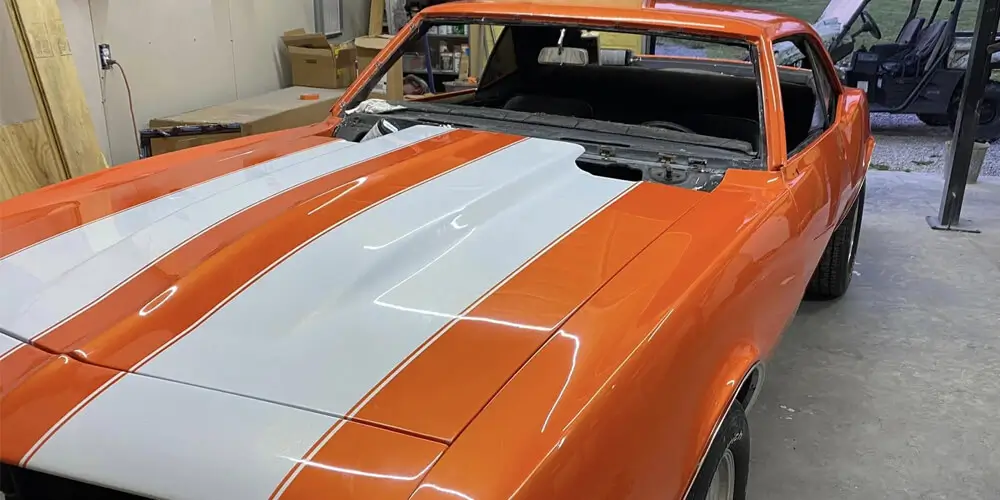
Waste Reduction and Resource Optimization:
Automotive paint thinners enable painters to adjust the viscosity and consistency of paint, allowing for precise application. By achieving the desired thickness, thinners help reduce over-application, minimize paint waste, and optimize resource utilization. This results in less paint consumption and a reduced environmental footprint.
Extended Paint Lifespan:
Over time, paint may thicken due to exposure to air or other factors, making it challenging to use. Automotive paint thinners can restore the original consistency of aged or unused paints, extending their lifespan and preventing unnecessary disposal. By revitalizing paints, thinners reduce the need for additional purchases and promote waste reduction.
Equipment Cleaning and Reusability:
Automotive paint thinners are essential for cleaning painting equipment, such as brushes, rollers, and spray guns. By effectively removing paint residues, thinners enable the reuse of these tools, minimizing the need for frequent replacements and reducing waste generation. Proper equipment cleaning with thinners ensures the longevity of painting tools, contributing to sustainable practices.
Low Volatile Organic Compound (VOC) Formulations:
Volatile organic compounds (VOCs) are harmful to human health and the environment. Automotive paint thinners are formulated with low VOC content, reducing emissions during the painting process. By using low VOC thinners, painters can minimize air pollution, improve indoor air quality, and contribute to a healthier and more sustainable environment.
Controlled Application Techniques:
Efficient application techniques are crucial for sustainable painting practices. Automotive paint thinners facilitate controlled application by ensuring even paint distribution and minimizing overspray. By enabling accurate and controlled paint application, thinners help conserve resources, reduce the need for rework, and promote sustainable painting practices.
Energy Efficiency in Spray Application:
Spray application systems offer energy efficiency advantages compared to traditional methods like brushing or rolling. Automotive paint thinners are commonly used in spray applications, which require less energy and result in reduced energy consumption. By enabling efficient spray application, thinners contribute to energy conservation and sustainable painting practices.
Proper Disposal and Environmental Impact:
Disposal of paint-related waste, including used thinners, must follow proper procedures to minimize environmental impact. Automotive paint thinners should be disposed of in accordance with local regulations and guidelines for hazardous waste management. Following appropriate disposal practices ensures that thinners do not end up in landfills, pollute soil, or contaminate water sources.
Conclusion:
Automotive paint thinners play a vital role in promoting sustainable painting practices in the automotive industry. Through waste reduction, extended paint lifespan, equipment reusability, low VOC formulations, controlled application techniques, energy efficiency, and proper disposal, thinners contribute to resource conservation and environmental protection. SYBON's commitment to sustainability and the responsible use of automotive paint thinners allows the automotive industry to embrace sustainable painting practices and work towards a greener future. By integrating these practices, we can achieve professional-quality results while minimizing our impact on the environment.
